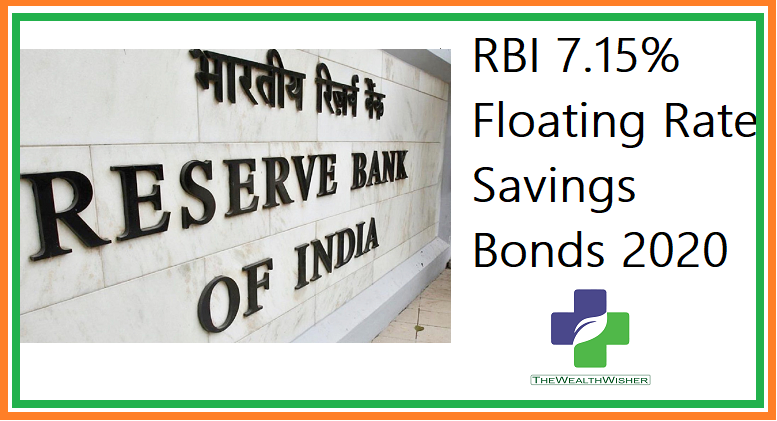
Emphasize:
- Post-tax returns for people with an annual income of 1 million rupees will be between 6.08-7.15%.
- This rate of return is much better than bank time deposits, which provide pre-tax returns up to 6% over a period of 5-10 years.
- These bonds have a term of seven years and there is no option to exit early.
After withdrawing the popular 7.75% (taxable) bonds on May 28, the government has proclaimed the launch of a fresh series of bonds with an interest rate of 7.15%. The interest rate will be reset every six months based on the current interest rate. The bond has a term of seven years and its interest will be taxed at your slab rate.
What is the form of bonds?

The bonds will only be issued electronically and will be deposited in the holder’s credit account called the “Bond Ledger account” (BLA), which has opened in the receiving office.
Who can subscribe to these bonds?
Only resident Indians or Hindu Undivided families (HUF) can subscribe to these bonds. NRI can’t invest in these bonds.
How much can you subscribe to?
The minimum subscription price for notes is ₹1,000, and you can subscribe to multiples of ₹1,000. There is no most limit for investment in them.
When is the interest rate paid?
The bond’s interest rate will be paid on January 1 and July 1 of each year. The first interest rate will be paid at a rate of 7.15% on January 1, 2021. You can also reinvest the interest to acquire new bonds in a multiple of 1,000 to enhance your funds. However, these bonds are valid for 7 years.
/GettyImages-140671550-56a636e83df78cf7728bdbc1.jpg)
Where to Subscribe?
One can subscribe the bond through branches of the Nationalised Bank, State Bank of India, and four enumerated private sector banks. In other words, these bonds will be issued at different branches of banks such as ICICI Bank, SBI Bank, HDFC Bank, IDBI Bank, and Brokerages. Despite the uncertainty in interest rates, these bonds should find investors’ traction because the safety of investments has now become a major concern for investors.
Points to remember:
- In some cases, senior citizens can redeem in advance.
- The bond does not meet the requirements for trading in the secondary market and can’t be used as collateral for loans from banks, financial institutions, NBFCs, etc.
- The sole surviving holder of the bond, or the only remaining holder, being an individual can make a nomination.
- Bonds in the form of BLA cannot be transferred unless transferred to the nominee/legal heir in the case of the bondholder’s death.
Financial planners have come out to support this bond
The founder of Full Circle financial planner and consultant, Kalpesh Ashar, emphasized the sovereign (government) guarantees behind the bonds, so making them very risk low. He also pointed out that floating interest rates are positive for them.
When the overall interest rate in the economy rises, the floating interest rate can be adjusted higher. When interest rates generally rise, this can help bondholders during periods of high inflation. However, when interest rates are decreased, bond interest rates will also be dropped.
Alternatives for investors include Public Provident Fund (PPF), Sukanya Samriddhi Yojana (SSY) and Kisan Vikas Patra (KVP), National Savings Certificate (NSC)
Senior Citizens’ Savings Plan

If you are a senior citizen, you can also invest in Pradhan Mantri Vaya Vandana Yojana (PMVVY) and Senior Citizen Savings Schemes (SCSS). Among these alternatives, currently, only SSY, SCSS, and PMVVY offer interest rates higher than the proposed bonds, which are 7.6%, 7.4%, and 7.4%, respectively.
However, SSY only refers to parents of girls under the age of 10, with a maximum deposit limit of ₹1.5 lakh per year. Similarly, the upper limit of SCSS and PMVVY is 1500000 rupees per person, which is only open to senior citizens.
“In the current situation, considering the safety, these bonds are a decent issuance with no investment limit. People, especially senior citizens want to store their money in a safer option for a long time and do not need a fixed monthly income (pay every six months once) can consider using it,” said Prableen Bajpai (the founder of the wealth management company, Finfix Research, and Analytics)
Another competitor to these bonds is the debt mutual fund
Debt fund returns may fluctuate due to credit quality (default risk) and interest rate risk (changes in bond prices due to changes in interest rates).
Due to government guarantees and a six-month interest rate reset, the proposed bond is relatively safe from these two factors. Returns are the third parameter of the comparison. It is difficult to compare the potential returns of debt funds affected by credit and interest rate risk with fixed-rate products.
However, a rough way to estimate debt fund returns is to look at their yield to maturity (YTM) minus the expense ratio. In addition to bond funds that bear an enormous amount of credit risk, most debt fund YTMs are currently in the 5-6% range. Even if we set the expense ratio to zero, it is more economical than 7.15% on the bonds. In a shorter period, the YTM of the debt fund is 4-5%.
However, Chief financial planner of Sykes and Ray Equities (I) Ltd, Kirtan Shah pointed out some advantages of debt funds. “I think there is room for interest rates to fall further and then rise. This flow will be attracted by short-term funds such as liquidity and ultra-short-term funds as well as this product, but maybe more effectively by these funds.”
Besides this, he further said, debt funds also enjoy tax benefits and liquidity benefits. Capital gains from holding mutual debt funds for more than three years are taxed at a rate of 20%, and you will receive indexed gains. However, interest in these government bonds will be taxed at the flat rate. Similarly, open-end debt funds can be redeemed on any working day. For bonds with a maturity of seven years, this is not possible.
Senior Citizens in low-tax brackets who want a fixed income can consider buying these bonds. However, they should pay attention to the lack of liquidity in them, and there are no options to choose them from each month.
For those who are still savings and do not need steady income, tax-exempt government savings tools like PPF can provide better value.
These bonds are a good choice for time deposit investors who are willing to lock their funds for seven years and earn more than bank deposits,” managing director of Sift Capital, Vineet Nanda said.




